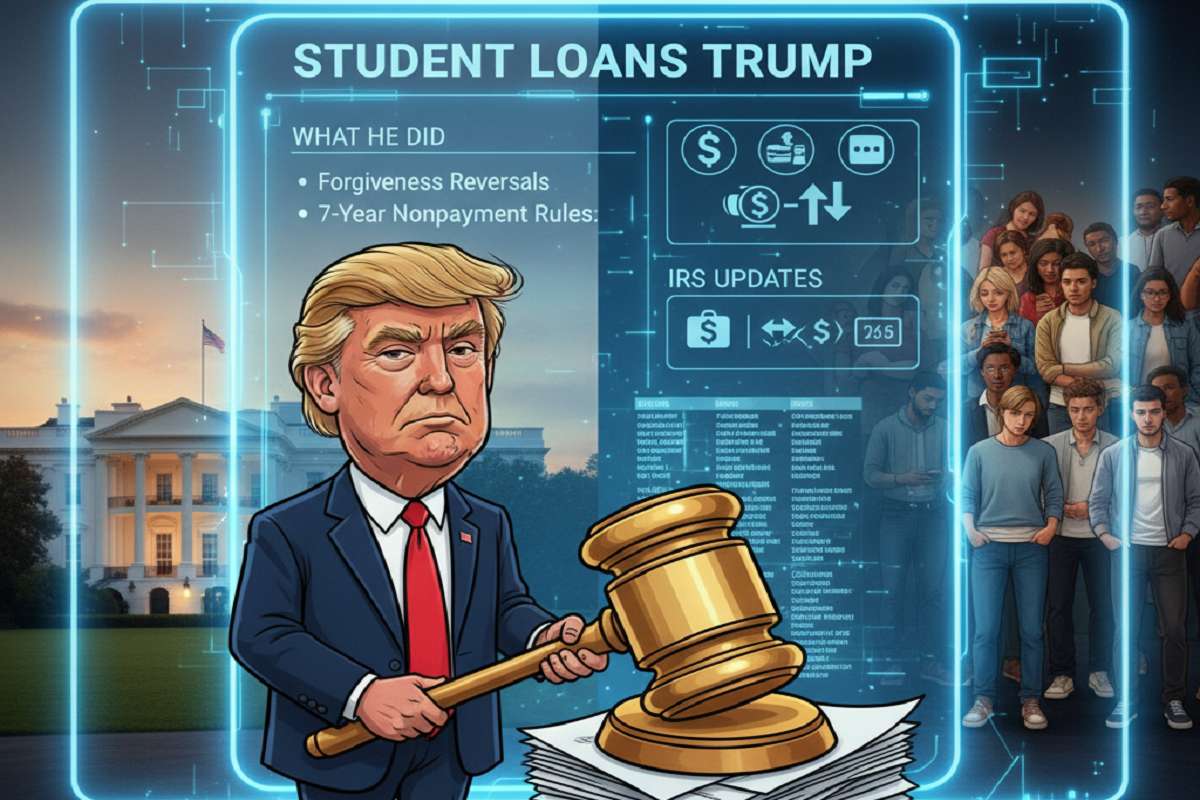Trump’s Impact on Student Loan Policies: Under President Donald Trump’s administration, significant changes have been implemented regarding federal student loan policies. These changes encompass the resumption of Income-Based Repayment (IBR) forgiveness, proposed borrowing caps for graduate and professional students, and alterations to the Public Service Loan Forgiveness (PSLF) program. Additionally, the administration has addressed the implications of nonpayment after seven years and the origins of student loan forgiveness initiatives.
Resumption of Income-Based Repayment (IBR) Forgiveness
In October 2025, the U.S. Department of Education resumed processing student loan forgiveness under the Income-Based Repayment (IBR) plan. This plan allows borrowers to have their remaining student loan balances forgiven after 20 to 25 years of qualifying payments. The resumption followed legal pressure from the American Federation of Teachers, which had sought court intervention due to the department’s months-long delay. Eligible borrowers were notified that they must opt out by October 21 if they do not want their remaining balances forgiven. Discharges are expected to be processed within two weeks after that deadline, although delays are possible due to the ongoing government shutdown, which has furloughed most of the department’s staff.
Proposed Borrowing Caps for Graduate and Professional Students
The Trump administration has initiated significant changes to student loan repayment through proposed new rules included in a recent spending bill. Central to these changes are new borrowing caps that would limit federal student loans available to graduate and professional students. The plan seeks to eliminate the Grad PLUS loan program, replacing it with a cap of $20,500 per year and $100,000 lifetime for graduate students, and $50,000 per year and $200,000 lifetime for professional students. However, the higher cap applies only to 10 specific professional programs, including medicine, law, and theology. These caps could limit access to federal funding for programs not on the list, such as clinical psychology, business, and engineering, potentially driving students to private loans or deterring enrollment altogether. While the Department argues the changes will curb excessive borrowing and simplify repayment, critics warn they may reduce access to essential high-cost programs. Full implementation is scheduled for July 2026, with further negotiations to be held before then.
Alterations to the Public Service Loan Forgiveness (PSLF) Program
On March 7, 2025, President Trump signed an Executive Order to end taxpayer-funded student loan forgiveness for individuals deemed to be “anti-American activists.” The Public Service Loan Forgiveness (PSLF) program, established by Congress in 2007, encourages Americans to enter the public service sector by promising to forgive their remaining student loans after they complete 10 years of service in those jobs while making 10 years of minimum payments. The recent executive order aims to align the PSLF program with actual public service, ensuring that only those engaged in qualifying public service roles benefit from loan forgiveness.
Implications of Nonpayment After Seven Years
Regarding the consequences of not paying student loans for seven years, it’s important to distinguish between federal and private loans. Federal student loans do not disappear after seven years. They remain collectible, and the government can take actions such as wage garnishment or tax refund offsets to recover the debt. Private student loans, on the other hand, may fall off your credit report after seven years and are not legally collectible after the statute of limitations expires, unless the lender takes legal action.
Origins of Student Loan Forgiveness Programs
The concept of student loan forgiveness in the United States began with the establishment of the Public Service Loan Forgiveness (PSLF) program in 2007. This program was created by Congress to encourage individuals to enter public service by offering loan forgiveness after 10 years of qualifying employment and payments. Since then, various income-driven repayment plans, such as Income-Based Repayment (IBR) and the Saving on a Valuable Education (SAVE) plan, have been introduced to provide additional avenues for loan forgiveness. These programs have undergone changes and suspensions under different administrations, reflecting the evolving policies surrounding student loan forgiveness.
FAQs
President Trump implemented significant changes to federal student loan policies, including the resumption of Income-Based Repayment (IBR) forgiveness, proposed borrowing caps for graduate and professional students, and alterations to the Public Service Loan Forgiveness (PSLF) program.
Generally, no. Once the Department of Education officially discharges a borrower’s loan, the debt is considered forgiven and is unlikely to be reversed.
Federal student loans remain collectible after seven years, and the government can take actions such as wage garnishment or tax refund offsets to recover the debt. Private student loans may fall off your credit report after seven years and are not legally collectible after the statute of limitations expires, unless the lender takes legal action









